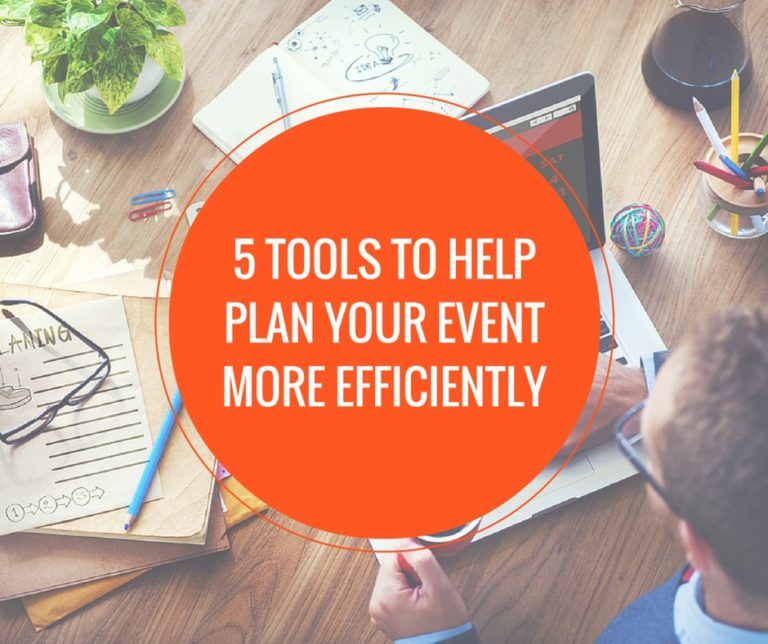Imagine a sunny afternoon at a park festival with local food vendors, live music, families laughing on picnic blankets, and everything running seamlessly. That’s the magic of great outdoor event planning. But behind that smooth experience is a lot of careful prep. Unlike indoor events, outdoor planning has to factor in the one wildcard you can’t control, the weather. A sudden downpour or heatwave can change everything, which is why outdoor events require an extra layer of flexibility and backup plans.
This guide gives event organizers practical outdoor event planning tips, from permits and setup to weather-proofing, so you can plan confidently and create memorable outdoor experiences.
Why outdoor event planning matters
Outdoor events open the door to experiences that indoor venues simply can’t replicate. Think open-air concerts with city skylines in the background, farmers’ markets buzzing with foot traffic, or a charity 5K winding through a scenic trail. Outdoor spaces create room to grow, breathe, and connect, and that’s incredibly powerful for both organizers and attendees.
The benefits of hosting it outside
Outdoor events come with real advantages:
- Atmosphere and ambiance: Nature does the decorating for you. Sunsets, greenery, fresh air, and the environment become part of the experience.
- More space and flexibility: Parks, fields, and streets often allow for larger crowds and more creative layouts compared to indoor venues.
- Memorable experiences: Outdoor settings tend to feel less formal and more immersive, giving attendees a reason to stay longer and share their experience.
With the right outdoor event planning strategy, organizers can create events that feel bigger, more open, and more engaging.
The challenges you need to plan for
Of course, outdoor events come with a different set of responsibilities:
- Weather unpredictability: Rain, wind, heat, and sudden changes can derail even the best plans if you’re not prepared.
- Permits and compliance: Most outdoor locations require permits, insurance, and coordination with local authorities.
- Logistics and access: Power sources, restroom access, vendor setup, attendee flow, all of it needs to be mapped out from scratch.
Without a plan, a great idea can easily get overwhelmed by outdoor variables. That’s why solid outdoor event planning is more than just picking a park; it’s coordinating every detail in advance.
Events that truly thrive outdoors
Some events are simply meant for open air:
- Music and cultural festivals
- Community markets and food fairs
- Charity walks and races
- Outdoor yoga sessions, art fairs, and holiday markets
These event formats thrive outdoors because they invite movement, exploration, and community. People expect to walk around, engage with vendors, cheer on participants, or just soak in the atmosphere.
Even with all the moving pieces, you’re not on your own. With a platform like Events.com, organizers can manage everything from selling tickets and handling registrations to updating attendees and tracking performance, all in one place. Outdoor event planning becomes easier when the operational side is supported, so you can stay focused on creating the experience instead of scrambling behind the scenes.
Now that we’ve covered why outdoor event planning matters, let’s get into the first step: choosing the right venue.
1)Â Choosing the perfect outdoor venue
The right space doesn’t just look good, it needs to be practical as well. Think about how many people you expect, and whether there’s room for things like a stage, vendor booths, or check-in tables. Some venues come with built-in perks like bathrooms or electrical outlets. Others require you to bring in everything yourself, which takes more time and budget.
If you’re incorporating tech like VR booths, XR stations, or AR displays, make sure the venue can support it, especially when it comes to power needs, Wi-Fi, or secure space for equipment.
Where it’s located is just as important. A scenic park might be beautiful, but if it’s hard to reach or has no nearby parking, guests will notice. A downtown plaza may be easier to get to and already have power and lighting, but it might come with stricter noise limits or earlier closing hours.
Most outdoor spaces have their own rules, and it’s better to know them early. Noise limits, alcohol restrictions, curfew times, and special permits can all affect what’s possible for your event.
Then there are the extra costs that don’t show up in the initial venue fee. Even if the price looks great, you may still need:
- Security
- Trash pickup
- Power or lighting
It’s a good idea to add a 10–15% buffer for those hidden costs.
In the end, choosing between something like a waterfront park and a downtown plaza comes down to your goals. One offers stunning views, the other offers built-in infrastructure. Both can work, it just depends on what you need most.
2) Navigating outdoor event permits & regulations
Once you’ve chosen your venue, the next step is making sure you’re legally covered. Permits aren’t just paperwork; they help protect attendees, vendors, and you as the organizer. Getting them handled early keeps your outdoor event planning process on track and helps you avoid last-minute roadblocks.
Why permits matter
Most outdoor events require some form of legal approval. These permits help ensure safety, manage public space usage, and keep local authorities informed. Without them, your event could face fines or be forced to shut down, even if everything else is running smoothly.
Common types of permits
Depending on your location and event type, you may need one or more of the following:
- Public space use permits for parks, plazas, or city-owned locations
- Noise permits if you’re using amplified sound, live music, or announcements
- Health and food handling permits for any food trucks or vendors serving meals
- Alcohol permits if beverages are being served or sold
- Temporary structure permits for tents, stages, inflatables, or large signage
Always check directly with your city or municipality to confirm your requirements. Some permits can be approved within a week, while others may take 30 days or more, especially if it involves alcohol or street closures.
Application timeline & local coordination
Most cities offer online applications, but it’s still smart to call and speak to a permitting officer if possible. They can clarify forms, timelines, and whether you’ll need inspections or insurance certificates.
Local authorities can also become valuable partners. Community boards and neighborhood committees may have additional guidelines, and involving them early helps build goodwill — especially if your event affects traffic, noise, or public access.
Real example: charity run
Let’s say you’re organizing a charity run. You’ll likely need a road closure permit from the city’s transportation department, plus sanitation permits for portable restrooms along the route. You may also need noise approval for announcements at the start and finish. Securing these permits in advance ensures your race runs smoothly and keeps everyone safe.
3) Planning for weather: strategies & backup plans
Even the best outdoor events rely on one unpredictable factor: the weather. No matter how solid your timeline or vendor list is, outdoor event planning always needs a back-up plan for rain, heat, wind, or cold. Preparing for weather early protects your budget, your guests, and your peace of mind.
Weather-proofing basics
Start with the essentials. Tents and shaded structures provide relief from sun and light rain. If you’re planning an outdoor market or festival, invest in sturdy canopies, weight bags, and signage that can withstand wind gusts. Offering covered seating helps attendees relax and stay longer, especially if temperatures shift throughout the day.
For events like sunset concerts or outdoor movie nights, portable heaters or blankets can be a nice comfort if the temperature drops. If it’s a daytime sports event or charity walk, cooling stations, misting fans, and plenty of water stations go a long way.
Plan for the season you’re in
Different outdoor events face different seasonal challenges. In the summer, heat and sun exposure are the biggest concerns. That’s when hydration tents, cooling towels, and sunblock stations really make a difference. In the fall or early spring, mornings may be chilly, so communicating dress recommendations on your registration form helps attendees feel prepared.
If you’re planning outdoor events during the rainy season, investing in waterproof covers for sound equipment and ensuring electrical cords are elevated or protected is a must—not just for function, but for safety and permitting purposes.
Use real-time tracking tools
One of the advantages of modern outdoor event planning is access to apps and real-time weather tools. Platforms like Weather Underground, AccuWeather, and local alert systems can help you monitor changes by the hour. Checking the weather in the week leading up to the event is important, but keeping an eye on it during setup and during the event gives you time to pivot or pause if needed.
Backup plans & event insurance
Always have a Plan B. Depending on the scale of your outdoor event, that might look like renting a nearby indoor hall, reserving a smaller tent-covered area as a fallback, or creating a reschedule policy in your event terms. Event insurance is another smart layer of protection — many policies cover weather-related cancellations or postponements. This matters for any large-scale planning outdoor events, especially festivals, marathons, or outdoor expos where people travel in.
Real-world scenarios
- Food & craft festival (Summer): Set up misting fans and offer iced drinks at vendor booths to keep guests comfortable.
- Outdoor music concert (Spring): Rent a stage cover and confirm wind ratings for audio equipment, in case of sudden gusts.
- Charity walk or 5K (Fall): Communicate expected temperature drops and provide space blankets or heaters near the finish line in case it gets chilly.
Outdoor event planning isn’t about avoiding weather entirely, it’s about being ready for it. When you plan ahead and communicate clearly with attendees and vendors, even a weather challenge can be handled smoothly, with confidence.
4) Essential logistics for outdoor events
After planning for weather, the next big step in outdoor event planning is logistics, the behind-the-scenes details that keep everything running smoothly. These essentials often go unnoticed by attendees, but when managed well, they’re what transform a good outdoor event into a great one.
Power and lighting
Outdoor spaces rarely come with built-in power. From sound systems to vendor booths, you’ll need reliable power sources. Generators are a go-to option, but don’t forget to map out cord safety and backup options. For evening events, thoughtful lighting is key, not just for ambiance, but for safety on walkways, restrooms, and exits.
Sound and stage setup
Clear sound is non-negotiable for concerts, ceremonies, and races. Work with vendors who specialize in outdoor setups, since weather and acoustics can be trickier in open-air spaces. If you’re adding VR, XR, or AR experiences, factor in extra soundproofing or designated quiet zones to make sure tech-driven experiences work as intended.
Sanitation and restrooms
Comfort matters. Attendees are more likely to stay and enjoy themselves if restrooms are convenient, clean, and well-stocked. Portable restroom rentals should scale with your expected crowd, and adding accessible options shows care for all attendees.
Waste management & eco-friendly practices
Outdoor events generate a lot of waste, from food wrappers to water bottles. Build a waste plan early by coordinating with local waste services. Recycling and compost bins not only reduce cleanup time but also reflect positively on your event’s sustainability efforts.
Crowd management and safety
Large outdoor events need clear entry points, pathways, and exits. Barriers, signage, and staff placement all help with flow and safety. For high-energy events like races or music festivals, having medical staff or first-aid stations on site is a smart step that builds trust.
Vendor and exhibitor coordination
Outdoor events thrive on variety, food trucks, craft stalls, and sponsor event activations. But coordinating them requires planning. Assign clear load-in times, ensure vendors have power and water access if needed, and keep communication channels open on event day to avoid bottlenecks.
5) Marketing & Promotion for Outdoor Events
Once the logistics are mapped out, it’s time to make sure people actually show up. Marketing strategies are a cornerstone of outdoor event planning, and the good news is, you don’t need a massive budget to make an impact. With the right mix of social media, local outreach, and digital tools, you can build buzz and fill your space.
Leverage social media and local press
Outdoor events are naturally visual, which makes them perfect for platforms like Instagram, TikTok, and Facebook. Share behind-the-scenes setup shots, highlight participating vendors, or run countdown posts leading up to the big day. Encourage vendors, performers, and sponsors to cross-promote so your event reaches their audiences too.
Don’t underestimate traditional media either. Local newspapers, radio stations, and community newsletters are often looking for local event stories, especially if your event ties into culture, food, or community causes. A well-timed press release or media pitch can drive awareness beyond your social circle.
Seasonal angles that resonate
Tie your promotion to the season for added relevance. Summer night markets? Highlight cool drinks, live music, and evening strolls. Fall festivals? Focus on cozy food, crafts, or Halloween themes. Seasonal hooks make your outdoor event feel timely and create an extra reason for people to attend.
Use tools that simplify promotion
This is where technology helps lighten the load. With Events.com event management tools, you can set up event pages, sell tickets, and track registrations in one place. You can also use built-in event promotion features to reach new attendees — from email reminders to targeted marketing campaigns. Having everything connected not only saves you time but also makes your event look professional and trustworthy.
Partnerships and community connections
Outdoor events thrive on community support. Partner with local businesses that align with your audience, cafés, gyms, boutiques, breweries, and offer cross-promotion. Influencers, even micro-influencers, can add authenticity by sharing your event with their followers. Sponsorships don’t always need to be financial; in-kind support like free samples, giveaways, or equipment can add value without inflating your budget.
6) Day-of event management & execution
After weeks (or months) of outdoor event planning, the big day arrives. This is when all the preparation pays off, and when small details can make a big difference. With the right systems in place, you can keep things running smoothly and stay focused on creating a great experience for attendees.
Arrive early and run final checks
Give yourself and your team more time than you think you’ll need. Arriving early allows you to walk the venue, double-check power sources, confirm vendor placements, and test sound systems before the first guest arrives. A quick run-through of your checklist can catch small issues before they become problems.
Coordinate staff and volunteers
Outdoor events often rely on a mix of staff and volunteers. Make sure everyone knows their role, whether it’s directing parking, managing check-in, or staffing first-aid stations. A short team huddle before doors open helps align everyone and sets a positive tone.
Keep communication clear
Radios, group text threads, or event apps are lifesavers for keeping teams connected. Designate a central point of contact for escalations so not every small hiccup comes directly to you. Clear communication prevents confusion and helps the team troubleshoot quickly.
Be ready to troubleshoot
Even the best outdoor event planning can’t prevent every surprise. A vendor might show up late, a power source might falter, or the weather could change. Have backup options in place, an extra extension cord, a spare tent, or a “runner” volunteer who can handle unexpected errands. Calm, visible leadership reassures both your team and your attendees.
Focus on attendee comfort
At the end of the day, the attendee experience is what makes your event memorable. Look for ways to add comfort: water stations on hot days, shaded seating, clear signage, or even roaming volunteers who can answer questions. Engaged, comfortable guests are more likely to stay longer, share their experience, and return next year.
7) Post-event wrap-up
When the last guest leaves and the lights go down, your work as an organizer isn’t over just yet. A strong wrap-up not only closes out this event but also sets the stage for your next one.
Breakdown and cleanup
Start with a plan for teardown. Assign clear responsibilities for staff and vendors so the space is returned to its original condition quickly. Coordinating waste pickup, equipment removal, and vendor load-out keeps things efficient and ensures you stay in good standing with the venue and local authorities.
Show gratitude
Outdoor events succeed because of people, the staff who kept things running, the vendors who created atmosphere, and the attendees who showed up. A simple thank-you email or social media post goes a long way. Personal notes to sponsors and partners also strengthen relationships for future events.
Gather feedback
Don’t wait too long to ask for input. Send post-event surveys within 24–48 hours, while the experience is still fresh. Keep surveys short and focused on what matters: What did attendees enjoy most? Where could things improve? Vendors and staff can also provide valuable perspectives.
Measure against your goals
Review your KPIs (key performance indicators). Did registrations meet your targets? How many walk-ups did you see compared to online sales? Were marketing efforts effective? This step helps you measure success and justify the value of your event to sponsors and partners.
Use insights to plan ahead
The final step in outdoor event planning is turning lessons learned into action. Maybe attendees loved the music but wanted more shaded seating. Or perhaps vendors needed clearer setup instructions. Capturing these insights now means your next event will be smoother, more efficient, and more memorable.
Your Next Outdoor Event Starts Here
From choosing the perfect venue to securing permits, planning for weather, and managing day-of logistics, outdoor event planning is all about preparation. The more details you cover in advance, the smoother your event will run, and the more memorable it will be for your attendees.
The key pillars are simple: plan carefully, stay compliant, and always have a backup for the unexpected. With those in place, you can focus on what really matters, creating experiences that bring people together.
Ready to bring your outdoor event to life? Explore how Events.com can help you manage everything from ticketing to promotion, let’s make it happen.
Frequently asked questions about outdoor event planningÂ
- How to plan an outdoor event?
Start with the basics: define your goals, choose a venue that fits your needs, and build a clear timeline. Outdoor event planning also means preparing for weather, coordinating vendors, and securing permits. Breaking it into stages — planning, promotion, day-of execution, and post-event wrap-up — helps keep everything manageable.
- How do I choose the right outdoor venue for my event?
Look for a space that matches your capacity, accessibility, and amenities needs. Consider parking, public transport, and whether the venue has restrooms or power access. Scenic value matters, but function is just as important. Always ask about rules (like noise limits or curfews) and factor in hidden costs such as waste management or security.
- What permits and permissions are required for outdoor events?
Requirements vary by location and event type. Common permits include public space use permits, noise permits, food handling licenses, alcohol permits, and temporary structure approvals (for tents or stages). Start the application process early — some permits can take weeks to approve. Working with local authorities ensures compliance and builds community support.




